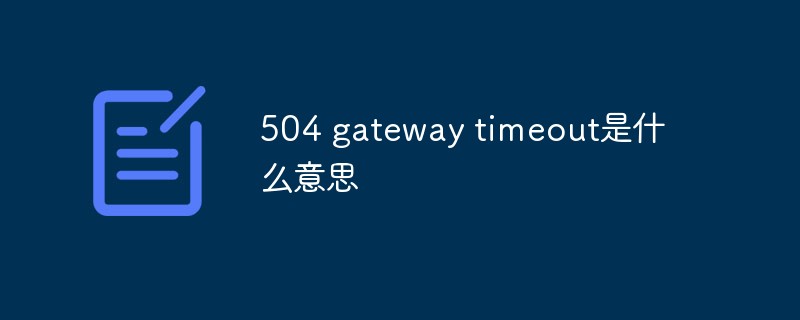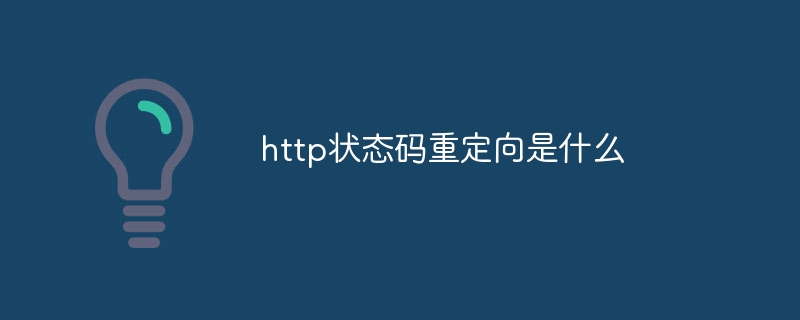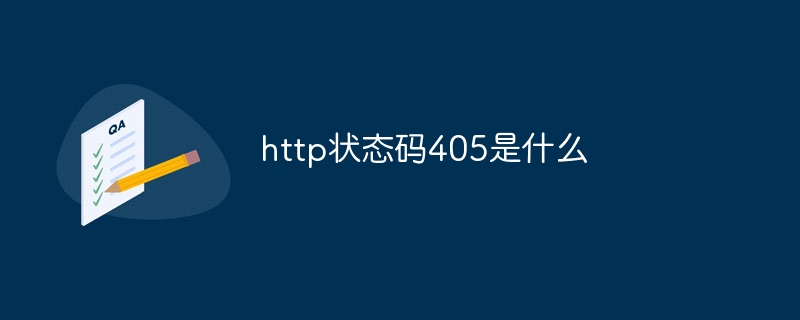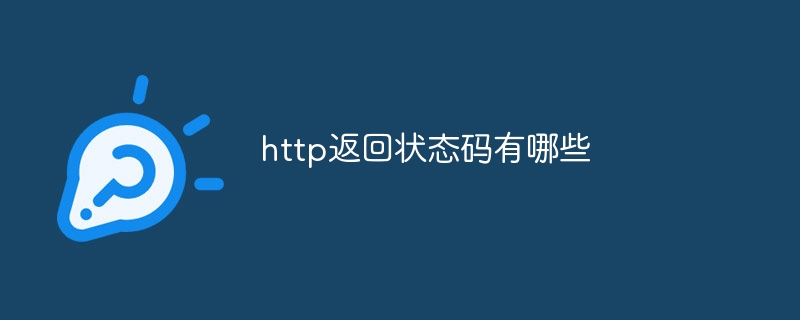Usage: 1. Create a resource. When the client sends a POST request, the server successfully processes the request and includes the URL of the newly created resource in the response; 2. Redirect, in this case, the response The header field Location will contain the redirected URL; 3. The response body usually contains information about the newly created resource, which can be the description, properties or other related data of the resource; 4. The optional response header field to provide More information about newly created resources.

# Operating system for this tutorial: Windows 10 system, Dell G3 computer.
HTTP status code 201 indicates that the request was successful and the server has created a new resource. In this article, we will detail the usage and examples of HTTP status code 201.
HTTP status code is a three-digit code returned by the server when responding to an HTTP request. Status code 201 is part of the 2xx success category and indicates that the request was successful and a new resource was created.
The usage of HTTP status code 201 is as follows:
1. Create resource: Status code 201 is usually used to indicate that a new resource has been successfully created. When the client sends a POST request, the server successfully processes the request and includes the URL of the newly created resource in the response. This URL can be obtained through the response header field Location.
2. Redirect: In some cases, the server may use status code 201 to instruct the client to redirect. In this case, the response header field Location will contain the redirected URL.
3. Response body: The response body of status code 201 usually contains information about the newly created resource. This information can be the resource's description, properties, or other related data.
4. Optional response header fields: The server can optionally include additional header fields in the response to provide more information about the newly created resource.
The following is an example showing the use of HTTP status code 201:
POST /api/users HTTP/1.1
Host: example.com
Content-Type: application/json
Content-Length: 56
{
"name": "John Doe",
"email": "john@example.com"
}HTTP/1.1 201 Created
Location: /api/users/123
Content-Type: application/json
Content-Length: 87
{
"id": 123,
"name": "John Doe",
"email": "john@example.com",
"created_at": "2022-01-01 12:00:00"
}In the above example, the client sends a POST request to create a new user resource. The server successfully processes the request and returns status code 201. The response header field Location indicates that the URL of the newly created resource is /api/users/123. The response body contains details of the newly created resource, including user ID, name, email, and creation time.
The client can use the returned URL to access the newly created resource or perform further operations as needed.
Summary:
HTTP status code 201 indicates that the request was successful and the server has created a new resource. It is typically used to indicate the successful creation of a new resource and to provide information about the resource in the response. By using status code 201, the server can provide the client with the URL and other relevant data about the newly created resource so that the client can further operate or access the resource.
The above is the detailed content of How to use http status code 201. For more information, please follow other related articles on the PHP Chinese website!
 http状态码520是什么意思Oct 13, 2023 pm 03:11 PM
http状态码520是什么意思Oct 13, 2023 pm 03:11 PMhttp状态码520是指服务器在处理请求时遇到了一个未知的错误,无法提供更具体的信息。用于表示服务器在处理请求时发生了一个未知的错误,可能是由于服务器配置问题、网络问题或其他未知原因导致的。通常是由服务器配置问题、网络问题、服务器过载或代码错误等原因导致的。如果遇到状态码520错误,最好联系网站管理员或技术支持团队以获取更多的信息和帮助。
 PHP如何获取http状态码Oct 07, 2023 pm 02:53 PM
PHP如何获取http状态码Oct 07, 2023 pm 02:53 PMPHP可以通过使用curl扩展和使用file_get_contents函数来获取http状态码。详细介绍:1、使用curl扩展,初始化curl会话,设置curl选项,执行curl会话,获取HTTP状态码,关闭curl会话;2、使用file_get_contents函数,发送HTTP请求,获取HTTP状态码。
 504 gateway timeout是什么意思Mar 02, 2023 pm 04:01 PM
504 gateway timeout是什么意思Mar 02, 2023 pm 04:01 PM504 gateway timeout的意思为“504网关超时”,是指服务器作为网关或代理,但是没有及时从上游服务器收到请求。504错误表示尝试为用户加载页面的Web服务器没有从其请求信息的其他服务器得到及时的响应。之所以称为504错误,是因为这是Web服务器用来定义此类错误的HTTP状态代码。
 PHP正则表达式实战:匹配HTTP状态码Jun 23, 2023 am 09:33 AM
PHP正则表达式实战:匹配HTTP状态码Jun 23, 2023 am 09:33 AMPHP正则表达式实战:匹配HTTP状态码在网站开发中,HTTP状态码是一个很重要的概念。根据HTTP协议规定,每个HTTP响应都应该包含一个3位数字的状态码,用于告诉客户端请求的处理结果。如果你正在使用PHP开发网站,那么掌握正则表达式来匹配HTTP状态码是很有用的技能。HTTP状态码的分类HTTP状态码按照首位数字分为以下5类:1xx:信息性状态码,表示服
 http状态码0表示什么Oct 18, 2023 am 10:15 AM
http状态码0表示什么Oct 18, 2023 am 10:15 AMHTTP状态码不包括0,如果在HTTP响应中看到一个以0开头的数字,那很可能是由于某种错误导致的异常情况或非标准的扩展,在正常的HTTP通信中,不会出现以0开头的状态码。
 http状态码重定向是什么Oct 13, 2023 pm 03:22 PM
http状态码重定向是什么Oct 13, 2023 pm 03:22 PMhttp状态码重定向是指在客户端向服务器发送请求时,服务器返回的状态码为3xx的情况,当服务器收到请求后,根据不同的情况,可能会要求客户端进行进一步的操作,如访问其他URL,重新发送请求等,这种情况下,服务器会返回一个重定向的状态码,告诉客户端应该如何处理请求。常见的重定向状态码包括301、302、303、307等,它的使用可以帮助网站实现页面跳转、URL重写、负载均衡等功能。
 http状态码405是什么Dec 05, 2023 am 10:44 AM
http状态码405是什么Dec 05, 2023 am 10:44 AMHTTP状态码405表示 “Method Not Allowed”,即请求中指定的方法不被允许,通常发生在尝试使用不被允许的HTTP方法,如GET、POST、PUT、DELETE等访问特定的资源时。
 http返回状态码有哪些Oct 18, 2023 pm 03:22 PM
http返回状态码有哪些Oct 18, 2023 pm 03:22 PMhttp返回状态码有100、101、200、201、204、301、302、304、400、401、403、404、500、502、503等。详细介绍:1、100,服务器已经接收到请求的头部,并且客户端应该继续发送请求的剩余部分;2、101,服务器要求切换协议,例如从HTTP协议切换到WebSocket协议;3、200,请求已成功处理,并返回所请求的数据;4、401等等。


Hot AI Tools

Undresser.AI Undress
AI-powered app for creating realistic nude photos

AI Clothes Remover
Online AI tool for removing clothes from photos.

Undress AI Tool
Undress images for free

Clothoff.io
AI clothes remover

AI Hentai Generator
Generate AI Hentai for free.

Hot Article

Hot Tools

SublimeText3 English version
Recommended: Win version, supports code prompts!

Safe Exam Browser
Safe Exam Browser is a secure browser environment for taking online exams securely. This software turns any computer into a secure workstation. It controls access to any utility and prevents students from using unauthorized resources.

Zend Studio 13.0.1
Powerful PHP integrated development environment

DVWA
Damn Vulnerable Web App (DVWA) is a PHP/MySQL web application that is very vulnerable. Its main goals are to be an aid for security professionals to test their skills and tools in a legal environment, to help web developers better understand the process of securing web applications, and to help teachers/students teach/learn in a classroom environment Web application security. The goal of DVWA is to practice some of the most common web vulnerabilities through a simple and straightforward interface, with varying degrees of difficulty. Please note that this software

mPDF
mPDF is a PHP library that can generate PDF files from UTF-8 encoded HTML. The original author, Ian Back, wrote mPDF to output PDF files "on the fly" from his website and handle different languages. It is slower than original scripts like HTML2FPDF and produces larger files when using Unicode fonts, but supports CSS styles etc. and has a lot of enhancements. Supports almost all languages, including RTL (Arabic and Hebrew) and CJK (Chinese, Japanese and Korean). Supports nested block-level elements (such as P, DIV),






